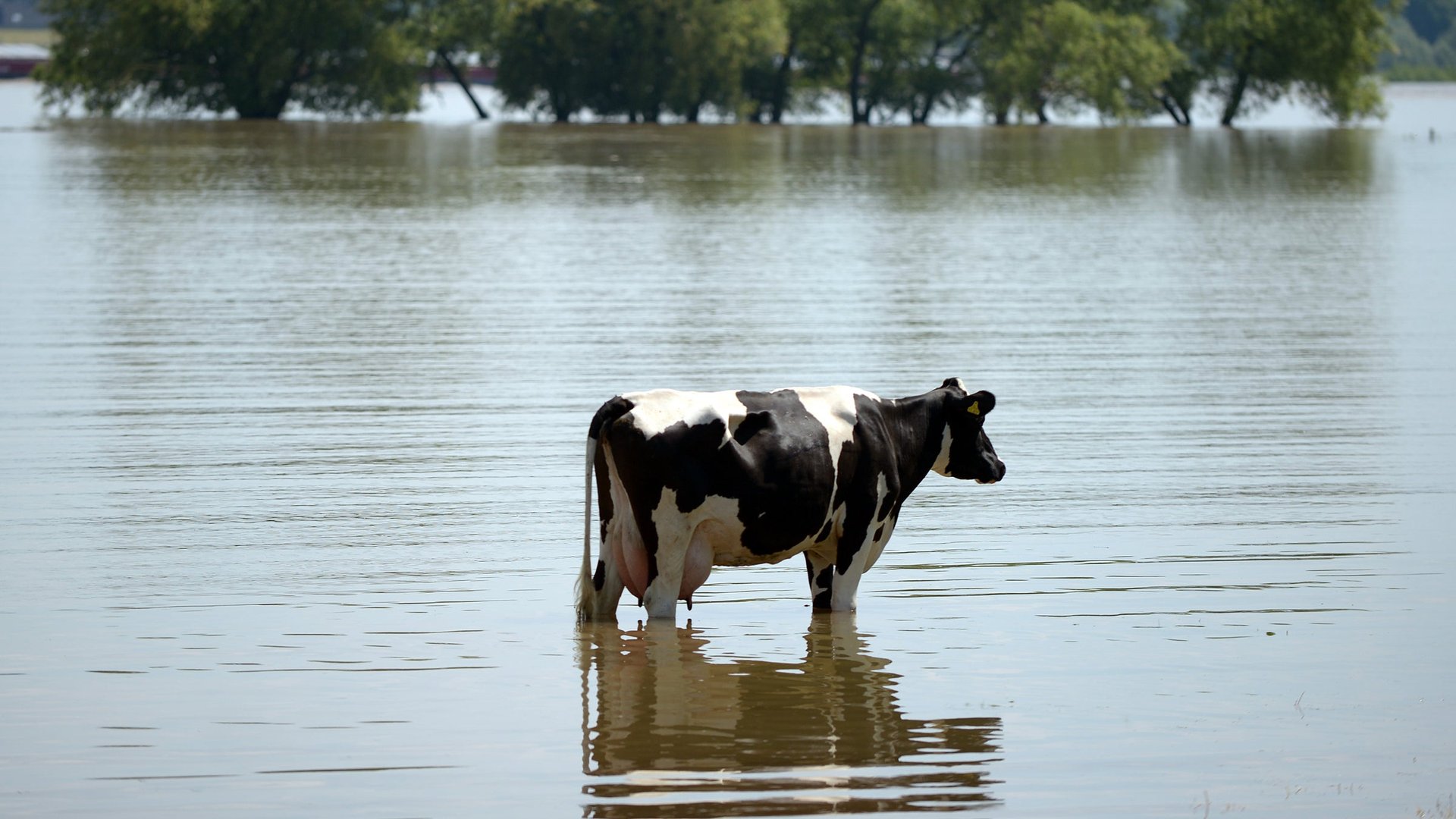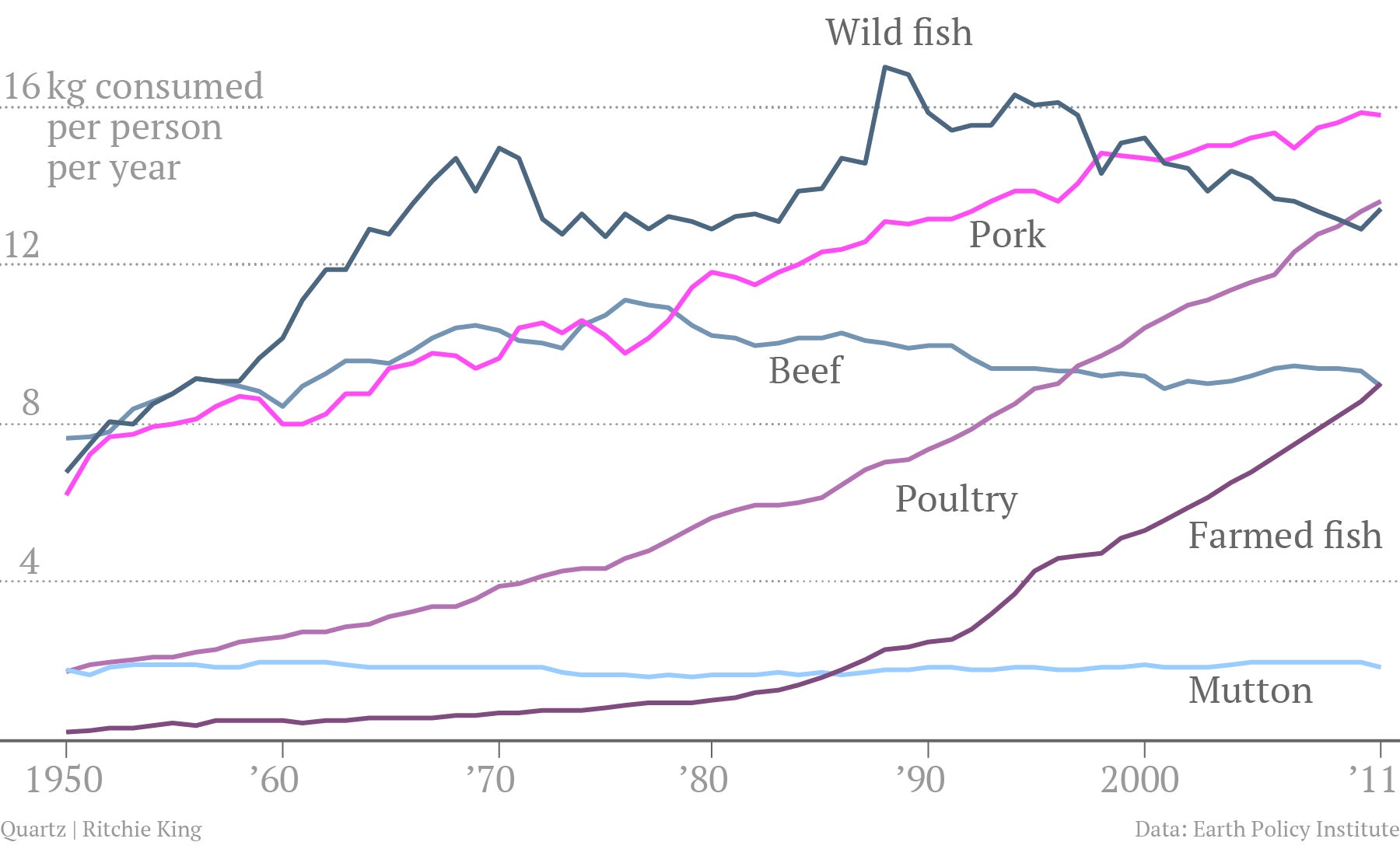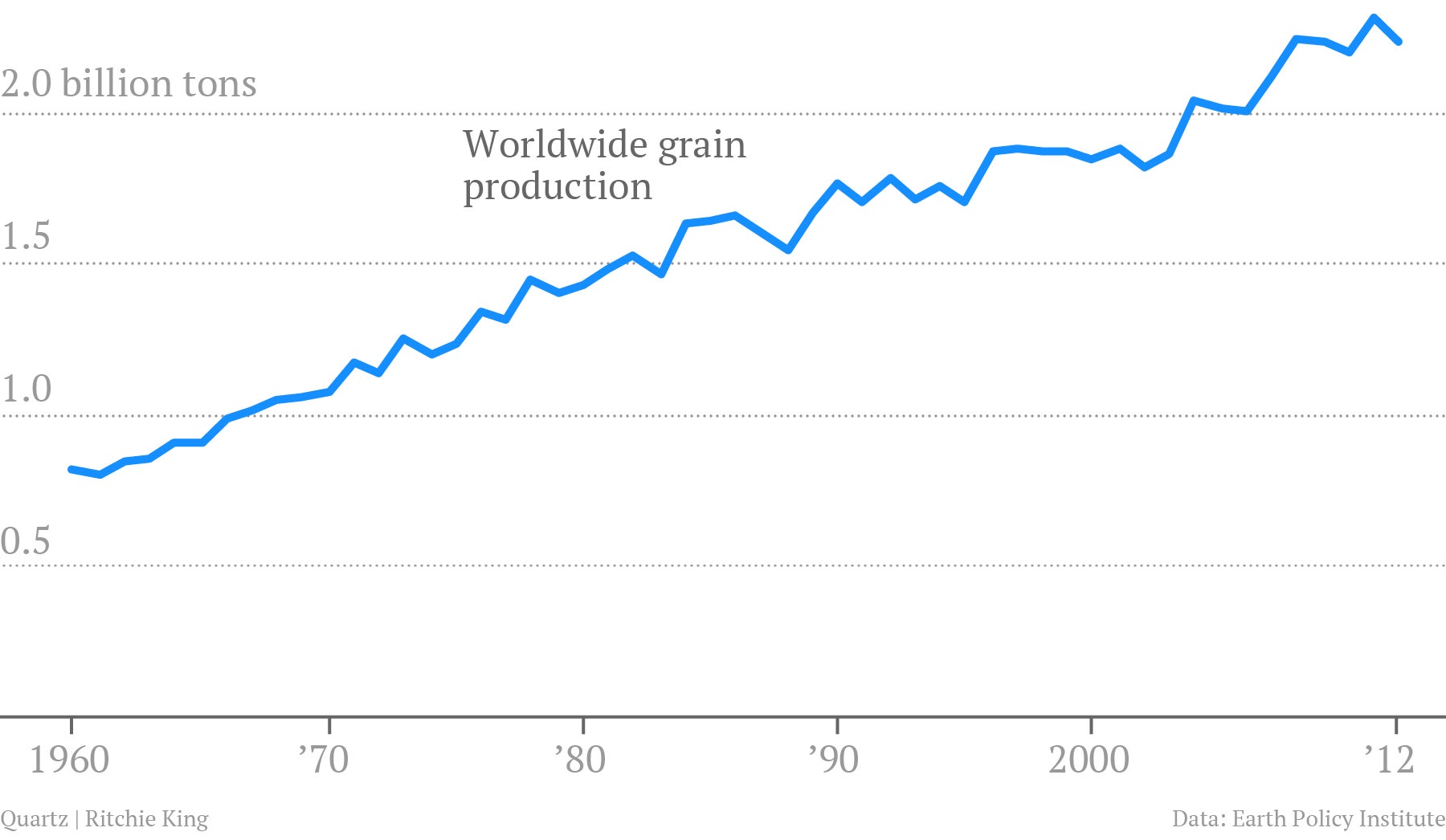The world is approaching Peak Meat, producing 7 times more than in 1950
Planet Earth is a giant food machine. It’s done an impressive job cranking out sustenance for the masses, often aided by human ingenuity. Innovations like factory farming or pesticides have helped it keep up with the planet’s booming population, even as it leapt from 2.5 billion in 1950 to 7 billion today.


Planet Earth is a giant food machine. It’s done an impressive job cranking out sustenance for the masses, often aided by human ingenuity. Innovations like factory farming or pesticides have helped it keep up with the planet’s booming population, even as it leapt from 2.5 billion in 1950 to 7 billion today.
But by 2050, the population will jump to 9 billion (pdf). The question is, can the machine continue to keep up?
The answer is: not really. Already, demand for food is straining the planet’s ability to produce it, as the Earth Policy Institute highlights. Meat production has increased more than 600% since 1950, and demand certain types of meat are already taxing the limits of the Earth’s ability to produce them:

Consider the case of beef. Farmers around the world have overstocked grasslands to keep up with demand, as EPI points out. But there’s simply not enough grass to feed as many cattle as hamburger fans demand. The supply squeeze is reflected in North American beef prices, which have spiked due to droughts that dried out grassland. As a result, US herd sizes are the smallest they’ve been in 60 years (paywall).
A similar situation is afflicting fish. The planet can’t replace them at anywhere near the rate at which we eat them. Around 85% of the world’s fish populations are overexploited or altogether exhausted. Fisherman globally are traveling farther and trawling deeper than ever before, only to end up with smaller catches.
Other livestock aren’t immune. Those animals that are easier to farm—chickens, hogs and certain fish—also need to be fed. As a result, demand for grain is rising:

A lot of the demand comes from China. The explosive growth of its fishing industry has helped drive a 429% spike in wild fish catches in recent years. Factory farming is also booming. The average Chinese person ate just 8 kilograms of pork in 1975; by 2011, that had risen to 37 kilograms, according to a JP Morgan note. The 550% rise in global pork production over the same period, based on EPI data, has prompted Chinese companies to lock down new supply overseas. Meanwhile, agricultural commodity prices have reached new highs (pdf). China now needs nearly two-thirds of the world’s soybean exports (pdf) and ever-rising tons of imported corn to feed its hogs and chickens.
Though China’s population growth is already slowing, rising incomes there and in other rising countries will continue driving up demand for meat (paywall). Developing countries will add some 2.3 billion people to the world population in the next 40 years, even as numbers in developed countries shrink.
This post has been updated to reflect that the world now consumes seven times as much meat as it did in 1950, not six times, as previously written.